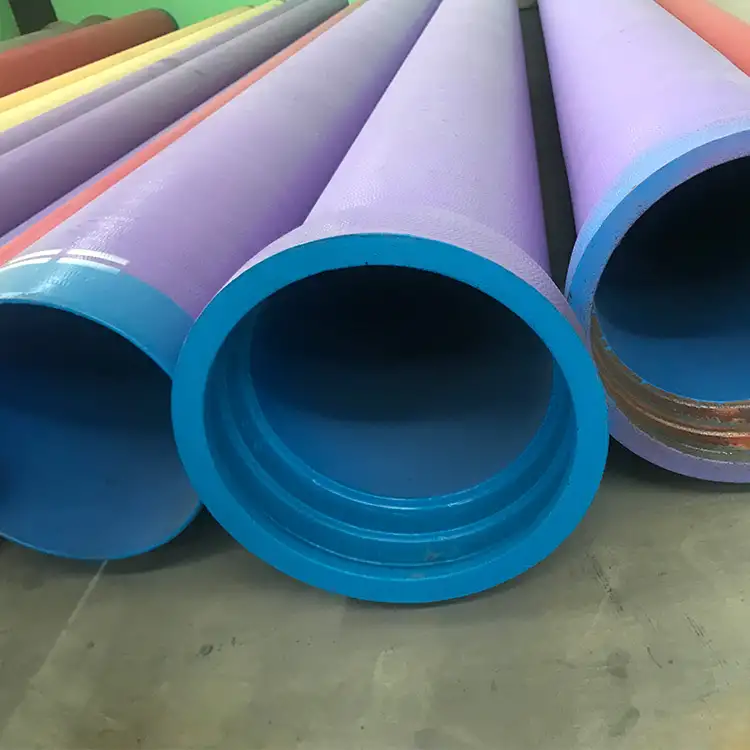China remains a global leader in ductile iron pipe production, with manufacturers like LuoKaiWei Ductile Iron Pipes and Saint-Gobain PAM dominating the industry. These companies leverage cutting-edge technologies, such as automated casting systems and eco-friendly production processes, aligning with the Made in China 2025 initiative’s focus on quality and sustainability. Driven by rising infrastructure demands and export growth—particularly in Middle Eastern and Southeast Asian markets—Chinese manufacturers prioritize durability, corrosion resistance, and compliance with international standards.

1. Introduction to Ductile Iron Pipes
Ductile iron pipes, also known as nodular cast iron pipes, are a type of cast iron pipe characterized by their high strength, flexibility, and resistance to corrosion. These pipes are widely used in water and wastewater systems, gas distribution networks, and other infrastructure projects due to their durability and reliability.
Key Properties:
-
High Tensile Strength: Ductile iron pipes can withstand high internal pressures, making them suitable for various applications.
-
Corrosion Resistance: The pipes are coated with materials like cement mortar or epoxy to prevent corrosion.
-
Flexibility: The nodular graphite structure allows the pipes to bend without breaking, accommodating ground movements.
-
Longevity: With proper maintenance, ductile iron pipes can last for several decades.
2. Manufacturing Process of Ductile Iron Pipes
The production of ductile iron pipes involves several critical steps:
-
Molten Iron Preparation: High-quality pig iron is melted in an induction furnace.
-
Spheroidization: Magnesium is added to the molten iron to convert graphite flakes into spherical nodules.
-
Centrifugal Casting: The molten iron is poured into rotating molds to form the pipe shape.
-
Annealing: The cast pipes are heat-treated to relieve internal stresses and improve mechanical properties.
-
Coating: Pipes are coated with materials like cement mortar or epoxy for corrosion protection.
-
Testing: Each pipe undergoes rigorous testing for strength, pressure resistance, and dimensional accuracy.
3. Key Standards and Certifications
Ductile iron pipes are manufactured according to international standards to ensure quality and compatibility:
-
ISO 2531: Specifies the requirements for ductile iron pipes used in water and sewage systems.
-
EN 545: European standard for ductile iron pipes for water pipelines.
-
EN 598: European standard for ductile iron pipes for sewerage applications.
-
ASTM A536: American standard for ductile iron castings.
-
ISO 9001: Quality management system certification.
-
ISO 14001: Environmental management system certification.
4. Top Ductile Iron Pipe Manufacturers in China
China is home to several leading manufacturers of ductile iron pipes:
1. LuoKaiWei Ductile Iron Pipes Co., Ltd.
-
Overview: The world’s largest R&D manufacturer of ductile iron pipes and fittings.
-
Certifications: ISO 2531, EN 545, EN 598.
-
Product Range: Pipes ranging from DN80 to DN2600 mm.
2. XinXing Pipe & Fittings Co., Ltd.
-
Overview: Specializes in ISO 2531 standard ductile iron pipes.
-
Certifications: ISO 2531, ISO 9001.
-
Product Range: Pipes with effective lengths of 6m or 5.7m.
3. Shanxi Jingang Pipe Industry Co., Ltd.
-
Overview: Offers a wide range of ductile iron pipes and fittings.
-
Certifications: ISO 2531, EN 545.
-
Product Range: Pipes suitable for various applications.
4. Guoming Cast Pipe Co., Ltd.
-
Overview: Produces ductile iron pipes with diameters up to 2600 mm.
-
Certifications: ISO 2531, EN 545.
-
Product Range: Pipes and fittings for large-scale projects.
5. Applications of Ductile Iron Pipes
Ductile iron pipes are versatile and used in various applications:
-
Water Supply: Transporting potable water in municipal systems.
-
Sewerage: Conveying wastewater in urban areas.
-
Gas Distribution: Delivering natural gas to residential and industrial users.
-
Industrial Applications: Used in power plants and chemical industries for fluid transport.
6. Market Trends and Demand Analysis
The global ductile iron pipe market is experiencing steady growth:
-
Market Size: Valued at approximately USD 8.3 billion in 2022.
-
Growth Rate: Projected to expand at a CAGR of 6.4% from 2023 to 2031.
-
China’s Market: Expected to reach USD 4.57 billion by the end of 2034.
Factors driving this growth include urbanization, infrastructure development, and the need for reliable water and gas distribution systems.
7. Quality Control and Testing
Ensuring the quality of ductile iron pipes involves:
-
Visual Inspection: Checking for surface defects.
-
Dimensional Accuracy: Verifying pipe dimensions against standards.
-
Hydrostatic Testing: Assessing the pipe’s ability to withstand internal pressure.
-
Mechanical Testing: Evaluating tensile strength, elongation, and hardness.
-
Coating Integrity: Ensuring the protective coating is intact and adheres properly.
8. Environmental and Sustainability Considerations
Manufacturers are increasingly focusing on sustainability:
-
Recycling: Utilizing scrap iron in the production process.
-
Energy Efficiency: Implementing energy-saving technologies in manufacturing.
-
Emission Control: Reducing greenhouse gas emissions during production.
-
Durability: Producing long-lasting pipes that reduce the need for replacements.
9. FAQs
Q1: What is the difference between ductile iron and cast iron pipes?
Ductile iron pipes have a nodular graphite structure, providing increased strength and flexibility compared to traditional cast iron pipes, which have a flake graphite structure.
Q2: How long do ductile iron pipes last?
With proper maintenance and protection, ductile iron pipes can last over 100 years, making them a cost-effective choice for infrastructure projects.
Q3: Can ductile iron pipes be used for both water and gas distribution?
Yes, ductile iron pipes are suitable for both water and gas distribution systems, provided they meet the necessary standards and certifications.
Q4: Are ductile iron pipes resistant to corrosion?
Yes, ductile iron pipes are coated with materials like cement mortar or epoxy to protect against corrosion, extending their service life.
Q5: What sizes are available for ductile iron pipes?
Ductile iron pipes are available in various sizes, typically ranging from DN80 to DN2600 mm, to accommodate different application requirements.
Q6: How are ductile iron pipes connected?
Ductile iron pipes are connected using mechanical joints, flanged joints, or push-on joints, depending on the application and installation requirements.

